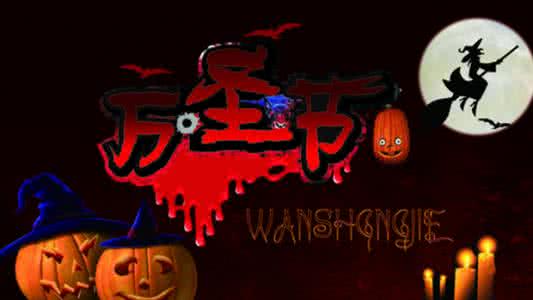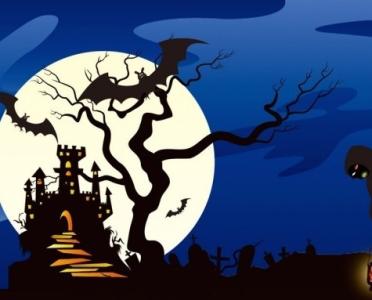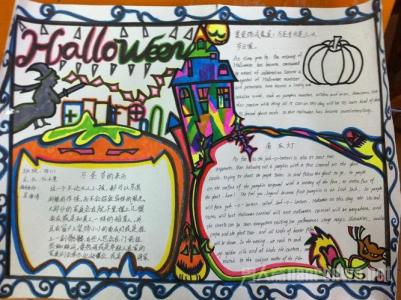点击查看高清大图>>>
Halloween, or Hallowe'en, a holiday celebrated on the night of October 31, is a mix of ancient Celtic practices, Catholic and Roman religious rituals and European folk traditions that blended together over time to create the holiday we know today.万圣节前夜(每年10月31日),在其形成过程中逐渐融合了凯尔特习俗、天主教仪式和欧洲民间传统,最终形成了我们今天所见的这样一个节日。Ancient远古时期
Shades: Throughout ancient history, Shades meant the spirit of a dead person, residing in the underworld.幽灵:远古时期,人们认为幽灵是生活在地下世界的死者的灵魂。
Carving gourds into elaborately decorated lanterns dates back thousands of years to Africa.将葫芦精雕细刻、做成灯笼的习俗可追溯到几千年前的非洲。800-450 B.C.公元前800-450年
The ancient Celts believed that wearing masks would ward off evil spirits.古凯尔特人相信戴上面具可以避开邪灵。Pre-1st Century1世纪前
Samhain: The Festival of Samhain is a celebration of the end of the Gaelic harvest season.死神节:盖尔人(苏格兰和爱尔兰的凯尔特人)庆祝丰收季节结束的节日。1st Century1世纪
Gaels believed that the border between this world and the otherworld became thin on Sambain; because animals and plants were dying, it allowed the dead to reach back through the veil that separated them from the living.盖尔人相信,在死神节,现世与冥界的边界会逐渐消失。动物和植物纷纷死去,而死者将穿过把他们同生者隔开的幕布重回世间。
Bonfires played a major role in the Festival of Samhain. Celebrants wore costumes, mostly skins and animal heads, and danced around bonfires.篝火对于死神节来说是必不可少的。参加庆典的人们穿上动物的皮毛和头颅做成的服装,围着篝火舞蹈。

By A.D. 43, Romans had conquered much of Celtic territory. Two Roman festivals were combined with the Celtic celebration of Samhain: Feralia, a day in late October when Romans commemorated the passing of the dead, and a day to honor Pomona, Roman goddess of fruit and trees.公元43年,罗马人占领了凯尔特人的大部分领土,并将两个罗马节日与死神节的传统结合起来:一个是纪念死者的Feralia节(十月末的一天),另一个是纪念罗马的果树女神Pomona的节日。
Werewolf: The original werewolf of classical mythology, Lycaon, a king of Arcadia who, according to Ovid's Metamorphoses, was turned into a ravenous wolf by Zeus. Possibly the source of the term lycanthropy.狼人:古罗马诗人奥维德在他的《变形记》中描绘了古典神话中狼人的原型——阿卡迪亚王吕卡翁,由于触怒天神宙斯而被变成了一匹狼。也许“变狼妄想狂”一词就是来源于这个故事。3rd Century3世纪
In the Roman Catholic church, a commemoration of 'All Martyrs' was celebrated between mid April and early May.在每年四月中旬到五月初这段时间,罗马天主教会庆祝一个名为“众殉道者节”的纪念性节日。7th Century7世纪
The festival of All Siants dates to May 13 in 609 or 610, when Pope Boniface IV consecrated the Pantheon at Rome.公元609或610年,教皇卜尼法斯四世为罗马万神殿祝圣,并将5月13日定为“众圣人节”。
This date was an ancient pagan observation, the end of the Feast of the Lemures, in which the evil and restless spirits of all the dead were appeased.这一节期原本是古老的异教节日——勒姆瑞斯(夜游魂)节的末尾,在这一节日期间人们试图安抚那些邪恶且永不安宁的亡魂。8th Century8世纪
Pope Gregory III designated November 1st All Saints' Day, a time to honor saints and martyrs.教皇格列高利三世将每年11月1日定为“众圣人节”,以此纪念圣人和殉道者。
Many believe the pope was attempting to replace the Celtic festival of the dead with a related, but church-sanctioned holiday.人们相信,教皇此举是为了用一个教会认可的节日来替代凯尔特的亡者之节日。
Saint Boniface declared that belief in the existence of witches was un-Christian.圣卜尼法斯(680-754,本笃会修士,美因茨大主教)宣布,相信女巫的存在是不合基督教教义的。10th Century10世纪
The Catholic church made November 2nd All Souls' Day, a day to honor the dead.天主教会将每年11月2日定为“万灵节”,以纪念死者。
The three Catholic celebrations, the eve of All Saints', All Saints', and All Souls', were called Hallowmas.至此,天主教的三大节日——众圣人节前夜,众圣人节,万灵节,被统称为“Hallowmas”(即“万圣节”之意)。Middle Ages中世纪
Carved turnips in Ireland and Scotland are used as candle lanterns in windows to ward off harmful spirits.在爱尔兰和苏格兰,人们将芜菁(形似萝卜)雕刻成灯笼放在窗台上,以此抵挡邪灵。
Soul cakes, often simply referred to as souls, were given out to soulers (mainly consisting of children and the poor) who would go from door to door on Hallowmas singing and saying prayers for the dead. Each cake eaten would represent a soul being freed from Purgatory.另一项传统习俗涉及“灵魂饼”:在万圣节期间,小孩和穷人会挨家挨户地唱歌并为死者祈祷,人们则给他们一种被称作“灵魂饼”的点心作为报酬。据说每吃掉一个“灵魂饼”,就会有一个灵魂被从炼狱中拯救出来。
 爱华网
爱华网



